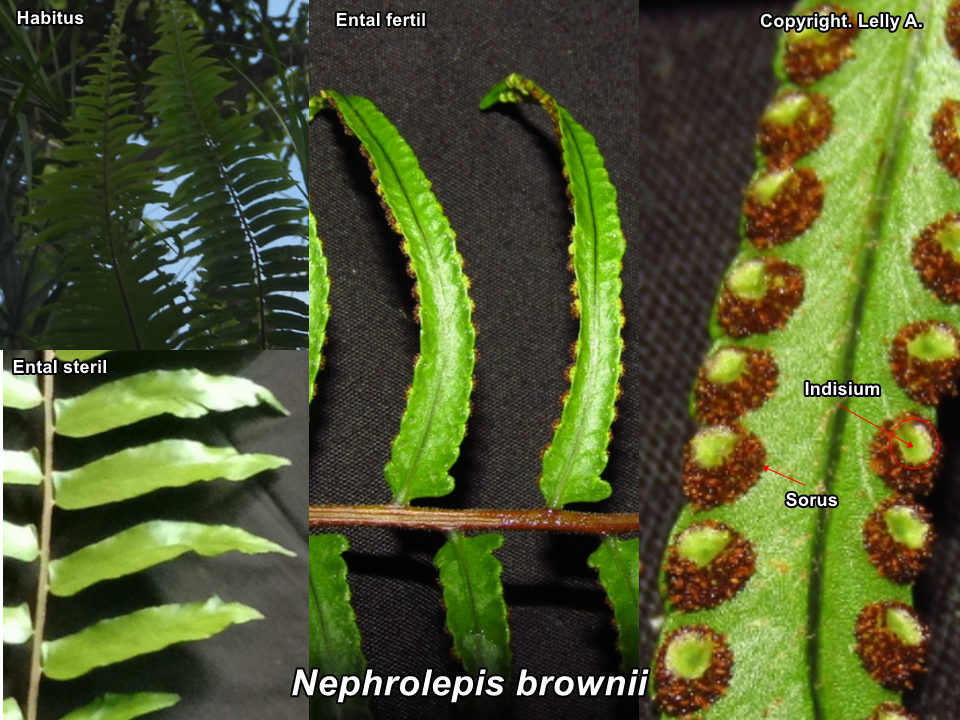Nephrolepis brownii
(Desv.) Hovenkamp & Miyam.
Polypodiaceae
Nama : Paku pedang.
Deskripsi : Terestrial, litofit atau jarang epifit. Rimpang pendek. Ental bercangap menyirip, tegak sampai melengkung, kehijauan, rakis biasanya terdapat sisik; anak daun melanset, ujung anak daun meruncing, tersusun berseling; ental steril dan fertil tidak memiliki perbedaan bentuk; ental fertil pada helaian anak daun terdapat sori. Sori bulat, melekat pada bagian bawah anak daun, sangat dekat dengan tepi daun, hijau sampai kehitaman, sedikit rapat.
Ekologi : Persebaran alami dari daerah tropis dan subtropis asia sampai kawasan pasifik, termasuk kawasan Indonesia. Pada umumnya tumbuh pada ekosistem dataran rendah, tumbuh secara terestrial atau litofit, namun pada beberapa habiat tumbuh secara epifit terutama pada batang pohon yang rimbun atau batang kelapa sawit. Referensi: Piggott, 1996; Vasco et al., 2013.
Kegunaan : –
Catatan : Pina fertil mirip dengan N. davallioides, sehingga perlu specimen assessment yang lebih mendalam.

